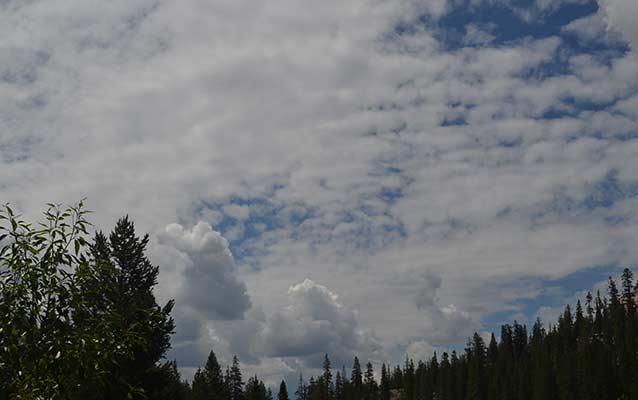Last updated: June 19, 2015
Lesson Plan
Exploring Climate Science: Weather and Climate

- Grade Level:
- Upper Elementary: Third Grade through Fifth Grade
- Subject:
- Science
- Lesson Duration:
- 60 Minutes
- Common Core Standards:
- 5.RI.7, 5.RI.9, 5.W.8
- Thinking Skills:
- Remembering: Recalling or recognizing information ideas, and principles. Understanding: Understand the main idea of material heard, viewed, or read. Interpret or summarize the ideas in own words. Applying: Apply an abstract idea in a concrete situation to solve a problem or relate it to a prior experience.
Objective
In “Exploring Climate Science (Weather and Climate),” students will use tools to collect weather data and discuss the differences between weather and climate. Students will be able to:
Compare and contrast weather and climate, providing at least three differences between the two.
Use an anemometer and thermometer to collect local weather data
Background
Water is essential for life on Earth. Relative water availability is a major factor in designating habitats for different living organisms. In the United States, things like agriculture and water rights are hot topics. Current models predict that average global temperatures are going to continue to rise even if regional climate changes remain complex and varied. These changes will have an impact on all of Earth's systems.
Studies have shown that climate change is driven not only by natural effects but also by human activities. Knowledge of the factors that affect climate, coupled with responsible management of natural resources, are required for sustaining these Earth systems. Long-term change can be anticipated using science-based predictive models, making science and engineering essential to understanding global climate change and its possible impacts.
National Parks can serve as benchmarks for climate science trends and effects over time because they are protected areas void of human influence. Understanding current climate trends will help set students up to be successful in interpreting and engaging in discussions about climate change, which will lead to informed decision making.
Preparation
-
Teachers will need access to a computer with internet and a projector for displaying the video.
-
Prepare the video Earth: Climate and Weather: http://video.nationalgeographic.com/video/science/earth-sci/climateweather-sci/
- Print copies of worksheets 2.1, 2.2, and 2.3 for students. (See Materials Section)
Materials
Worksheet to accompany video: Earth: Climate and Weather http://video.nationalgeographic.com/video/climate-weather-sci?source=relatedvideo
Download Worksheet 2.1: Weather Vs. Climate Venn Diagram
Students will record weather data on this worksheet.
Download Worksheet 2.2: Recording Weather Data
Students will match animals will their preferred climate types.
Download Worksheet 2.3: Who Lives Here?
Lesson Hook/Preview
Display video Earth: Climate and Weather. Have students fill out worksheet 2.1 while watching the video.
Procedure
STEP 1
-
Take students outside to an open area and demonstrate how to use the anemometers and thermometers. Split students into small groups to take a reading recording their data on worksheet 2.2.
Step 2
-
Bring the group back together for a discussion about local weather. Stress how the weather today could look very different from the weather tomorrow.
-
Discuss how the data they collected today was for the local weather. Climate would be the readings taken over a much longer period of time (decades etc). Facilitate brainstorm on how climate change can influence climate.
-
Explain how climate is connected to ecosystems—a hot climate is a dessert while a cold snowy climate would be the arctic. Animals and plants have specific climates that they live in.
- Facilitate worksheet 2.3 having students describe the climate in different pictures and match the animals to the ecosystem.
Vocabulary
-
Adaptation – the ability of a species to survive in a particular ecological niche, especially because of alterations of form or behavior brought about through natural selection.
-
Habitat—an ecological area that is inhabited by a particular species.
-
Climate – the average course or condition of the weather at a place usually over a period of years as exhibited by temperature, wind velocity, and precipitation.
- Weather – the state of the atmosphere with respect to heat or cold, wetness or dryness, calm or storm, clearness or cloudiness.
Assessment Materials
Have students write at least three sentences about the day's weather versus the local climate.
Enrichment Activities
Continue to have students collect local weather data each day. Use this data in a variety of ways: use data to practice graphing skills, compare weather data to past weather data to evaluate climate changes, compare weather data to past weather data to come to a consensus about the local climate, etc.
Related Lessons or Education Materials
Day 1- Earth as a System
Day 2- Weather vs Climate
Day 3- Watershed
Day 4- Climate Science Data and Tools
Day 5- Field Trip
Day 6- NPS Connections
Day 7- Project Preparation
Day 8- Evaluations
